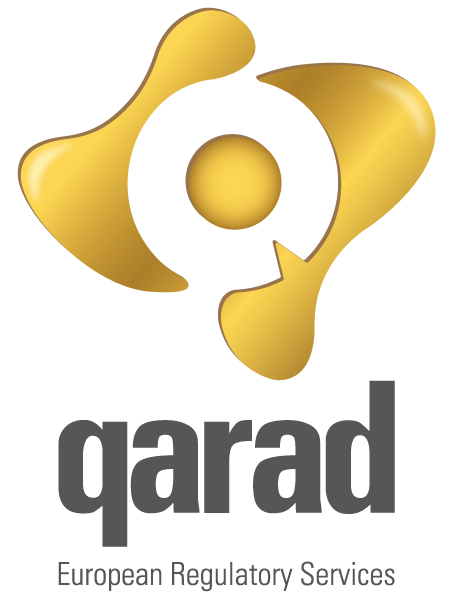The European Commission published the draft implementing regulation regarding the codes for the designation of Notified Bodies in the field of medical devices and in vitro diagnostic medical devices for public consultation. The feedback period ran from 27 September 2017 till 25 October 2017. QARAD, through its membership to the European Association of Authorised Representative raised its concern regarding the proposed “5 dimensional” 101 competency codes for the IVD sector directly to the European Commission.
This specific implementing act, required in accordance with MDR article 42 (13) and IVDR article 38 (13), is critical for the designation of Notified Bodies. November 26th is the date as of which the Notified Bodies can apply for designation under the MDR and IVDR. This implementing act is an essential building block that will underpin applications from notified bodies to be designated under the new IVD Regulation. Notified bodies apply for a designation under these codes, which together define the scope of the notified body. Your notified body is already designated for the IVD-Directive on the basis of the current NBOG codes, which describe its current scope.
Annex II of the draft implementing act lists the proposed new IVD NBOG codes and could be considered overly burdensome, due to a large number of codes and the complexity thereof, for notified bodies seeking designation. The list of codes allows for a multi-dimensional typology of devices, considering characteristics such as design and purpose, manufacturing process and technologies used. Notified bodies applying for designation must demonstrate their competence for each code they apply for. MedTech Europe has requested the urgent publishing of guidance documents for notified bodies and industry on when to adopt a code, the code level of detail and how codes will be applied by notified bodies.
The main concern with regards to the draft implementing act is the number and complexity of the coding system that could greatly drive up the auditing costs for the IVD industry and that could lead to designation gaps as notified bodies will not be able/willing to apply for all codes due to a lack of expertise to meet competency requirements.
How can Notified Body (NB) designation impact your organisation?
There are three distinct scenarios that could occur with a Notified Body, all could have a potentially serious impact on your business:
- Your current IVD-D NB becomes an IVD-R NB
- Your current IVD-D NB won’t become an IVD-R NB
- Your current IVD-D NB will reduce it’s scope and, thus, won’t be able anymore to cover your IVD-D product anymore
What if your current IVD-D NB becomes an IVD-R NB ?
This is of course the best case scenario. However you should still contact your Notified Body to verify that their new designation will cover all NBOG codes applicable to your products. There is still a risk that they will not apply for all required codes and that you will still need to establish a relationship with another NB to cover those products that your current NB will no longer be able to cover. The number of NBs that will be designated for IVDs will be very limited so you will be joining a long waiting line. Make sure you are on the radar of your NB and that you are working on a transition plan.
What if your notified body will not apply for designation for the IVD-R ?
If your NB informs you that they will not apply for designation under the IVDR you will have to find a new NB, or multiple NBs depending on the products you have and the scope of the NBs. In addition you will also have to stay in close contact with you current NB to monitor that you don’t end up in scenario three prior to having transitioned all your products to the IVDR under the new NBs certification.
What should you do in the case that your current IVD-D NB reduces it’s scope?
If your current NB reduces its scope (because e.g. they can no longer support it), and they can no longer cover your product, you will have to find a new notified body to ensure your continued compliance under the IVD Directive. This means that, if you don’t have a new notified body by the time that the certificates issued by them expire, you are considered « orphaned ».
If you fail to obtain certification from a new notified body by the time your current notified body’s mandate expires, you will need to apply to the competent authority of the EU member state in which you are established as manufacturer or (if the manufacturer is not established in the EU) in which the authorised representative is established. According to a recent publication on the website of the Dutch Authorities (link in Dutch) you will have to prove to your competent authority among other things:
- That the Quality Management System will be maintained until recertification by another notified body;
- that you are actively seeking the services of another notified body, including a summary of the status and the prospects of finding one that will re-certify the devices concerned and when;
- provide details of your Post Market Surveillance (PMS) system, recent PMS reports and management review relating to PMS and vigilance; and
- provide an overview of incidents everywhere in the world over the last 36 months (per country and number of products sold); and
- provide an overview of open, started and finished CAPAs caused by incidents over the last 36 months (including cause, root cause analysis, conclusions and solutions).
The objective of these requirements is to demonstrate to the competent authority that the safety of the IVD has been and will be safeguarded pending the transition to a new notified body.
It speaks for itself that while being under the supervision of the competent authority you cannot make any changes to the devices that would require notified body scrutiny or market any new devices that were not covered by the certificate(s) issued by the outgoing notified body.
An important point of consideration is that the NBOG guidance for notified bodies on enforced changes (NBOG BPG 2006-1) states specifically that the new notified body taking over your files should not issue a new certificate solely on the basis of the previous notified body’s documentation but a separate review of the manufacturer’s documentation and/or a site visit by the new notified body may be necessary.
These requirements may look daunting but never worry as we at QARAD can help you.
Conclusion
When needed, the best you can do is to find a new notified body quickly and be pro-active about it. If you initiate a voluntary transfer, there is a chance that the new notified body may accept the existing file without doing a full entrance audit. Our advice would also be to transition to a new NB as soon as possible because the closer to the Date of Application of the new regulation, the more overloaded your NB will be with clients that are having their devices certified to the IVDR and new clients will not be on the top of their priority list.
For all of the above NB scenarios the key message is that the better your files and data, the higher the chances that you succeed in the short term.
If you decide to extend your certificates under the IVDD into the « soft -transition » period (from 2022 till 2024) it is important to keep in mind the transitional provisions stated in Article 110 (3) that during this period no significant changes in the design and intended purpose can be made and that the requirements stated in the IVDR relating to post-market surveillance, market surveillance, vigilance, registration of economic operators and of devices shall fully apply.

